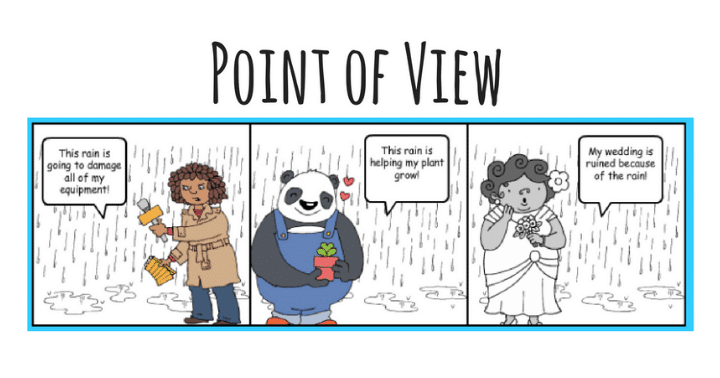
Why Study Point of View in Literature?
Posted In Literature | Posted By Susan YorkPoint of view is the perspective from which a story is told. With practice and focused attention, homeschool students will become more perceptive in identifying the author’s choices and explaining the effects they have on the reader. This process is the backbone of literary analysis.
When crafting a work of literature, the author must decide how the story will be narrated. There are three main options: first-person, second-person, and third-person narration. When reading literature, the easiest way to determine the point of view is by examining the pronouns used by the narrator.
Types of Literary Points of View
First-Person Point of View
In first-person point of view, one of the characters narrates the story using “I” pronouns. This technique, when done well, fosters a sense of connection between the narrator and the audience. The audience has intimate access to the narrator’s thoughts and feelings, which influences the way the audience perceives the character and his or her involvement in the action of the story. The events that make up the plot of the story are filtered through the narrating character’s perspective and colored by that character’s biases, motives, and limitations, frequently resulting in an unreliable narrator. When reading literature with a first-person narrator, students should consider how their own reactions to the plot and characters are influenced by the narrator’s perspective.
Second-Person Point of View
Second person narration occurs when the writer puts the reader in the driver’s seat by using “you” pronouns. This type of narration is rare, most likely because this technique is difficult to sustain. When done well, this method has the effect of making the reader feel like he or she is a part of the story. When reading literature with a second-person point of view, students should examine how the narration builds a sense of tension and suspense.
Third-Person Point of View
In third-person point of view, the narrator is not directly involved in the plot of the story. Within the category of third-person narration, there are three subtypes: third-person omniscient, third-person limited, and third-person objective.
Third-Person Omniscient Point of View
Stories written in third-person point of view feature an outside narrator with universal knowledge telling the story. A third-person omniscient narrator has access to the thoughts and feelings of all the characters as well as their actions. This type of narrator can reveal information to the reader that the characters themselves do not know. The author can use this perspective to communicate directly to the audience, so it is a common choice for authors who wish to emphasize the theme or moral of the story. When reading literature with a third-person omniscient point of view, students should pay close attention to the narrator’s commentary and how it shapes the audience’s perception of the characters and events.
Third-Person Limited Point of View
In third-person limited point of view, an outside narrator has limited knowledge of the characters and events. With this technique, the narrator only provides the reader with access to select characters’ thoughts and feelings. Some authors closely follow one character while others use this technique to switch between multiple characters. Using third-person limited point of view allows the author to withhold information and frequently heightens the readers’ suspense. When reading literature featuring third-person limited point of view, students should consider the effects of the author’s manipulation of the flow of information, especially how it influences the audience’s perception of conflict and character.
Third-Person Objective Point of View
Third-person objective point of view occurs when the narration only relates the outward actions of the characters with no access to any of the characters’ thoughts and feelings and no commentary about the action of the story. This technique is sometimes called “dramatic” or “camera-eye” perspective because the narrator’s only role is to capture the action as the plot unfolds. Students reading literature with an objective point of view should be encouraged to draw their own conclusions about the characters, conflicts, and events as they read.
Homeschool Students and Analyzing Point of View in Literature
Students should track their reactions to the characters and plot to see how their perceptions are influenced by the narrator. It can also be helpful to consider how the story would change if the author used a different type of point of view.
For instance, if a homeschool student is reading a book with third-person narration, he or she might try re-writing a short scene from the book using first-person narration. The homeschool teacher could then follow up by prompting the student to reflect on how telling the story from a different perspective alters the audience’s perception of the characters and/or events.
If you’re looking for a complete literature curriculum with a focus on exploring and analyzing literary elements through short stories, short works of nonfiction, novels, and poetry, Essentials in Literature features engaging video lessons and meaningful analysis assignments delivered in bite-sized chunks that make for a low-stress experience for both the homeschool student and teacher.


